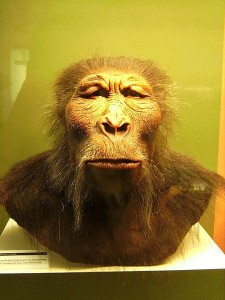Blog 8
https://megsbaaportfolio.blogspot.com
Paranthropus boisei
This image is of a Paranthropus boisei, which lived about 2.3 to 1.2 million years ago Eastern Africa. This shows us the development of human eating and is commonly known for heavy chewing. (Smithsonian. 2022).

Image sourced from Lillyundfreya (2017) The History of Our Tribe '18. Paranthropus boisei'.
This image highlights to modern day humans what our ancestors appeared like and the crucial role they played in our development, such as the fact that they had such a broad range on earth and survived for a million years.
They were much smaller than the modern day human, with a male Paranthropus boisei averaging height at 137cm and the females averaging at 124cm. It has also been highlighted that the reason as to why Paranthropus boisei died out was due to its inability to adapt to the changing environment. This is when the earth was undergoing times of intense heat and cold. (Welker, 2017).
References:
Barbara Helm Welker (2017). The History of Our Tribe: Homini. 18. Paranthropus boisei.
Lillyundfreya (2017) The History of Our Tribe '18. Paranthropus boisei'.
Smithsonian (July 2022). National Museum of Natural History. 'What does it mean to be human?'.

Comments
Post a Comment